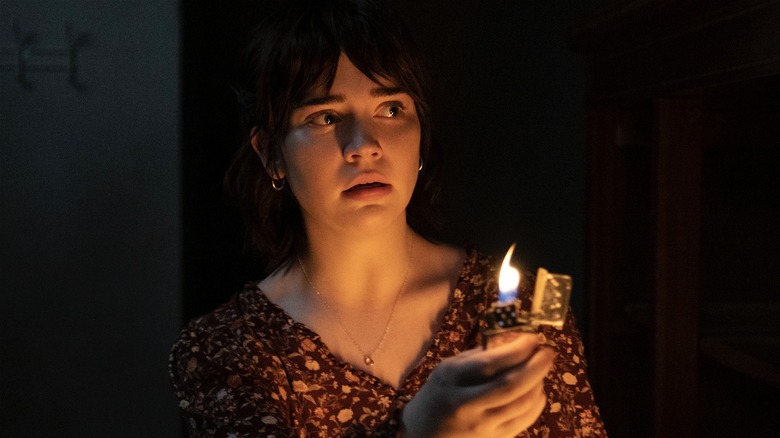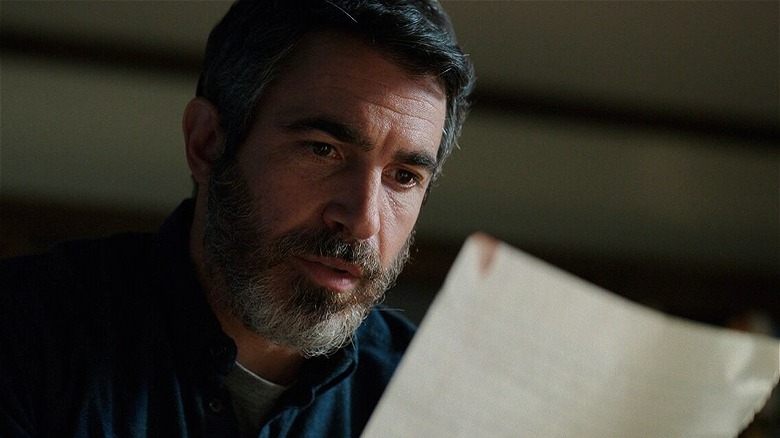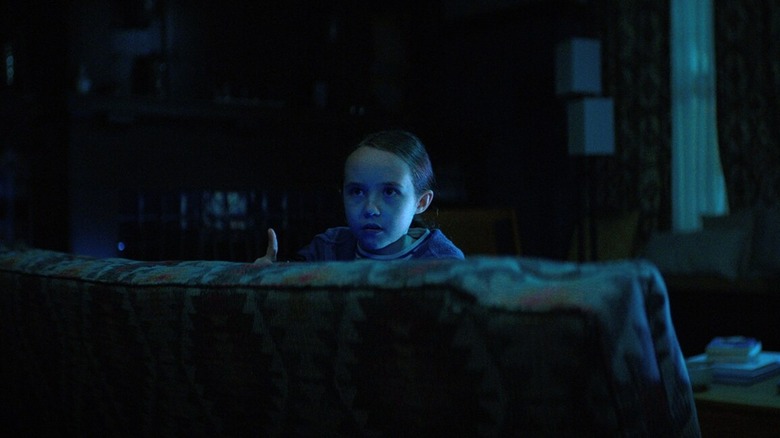The Boogeyman Review: A Fun Time - But Not The Crown Jewel Of King Adaptations
- Impressively staged jump scares, which shows director Rob Savage can stage effective set pieces on any scale.
- Effectively fleshes out its story from Stephen King's original source material — it manages to stay faithful while deviating from it entirely.
- I had a fun time, but I found myself admiring the scares more than I actually found them scary.
The concept of the "bogeyman" existed for centuries before Stephen King came to pen his short story "The Boogeyman" in 1973. This might be why, even as King's work remains the most renowned in contemporary horror (in both original novel form and various big screen adaptations), his eerie reimagining of the folktale has long been overshadowed by the generic cultural idea of a monster which frightens children.
When I arrived at my screening of director Rob Savage's very loose adaptation of that now half-a-century-old story, I was surprised to discover that various staff members I made small talk with at the theater were unfamiliar with the King tale — to them, the boogeyman remained something of a nondescript concept, the kind of thing an older sibling would tell you about to scare you before bedtime. The challenge faced by Savage's film became immediately clear; millions have grown out of finding the idea of this monster scary, so they needed to be reminded why this mythic creature has frightened generations of kids in the first place.
Don't look under the bed ...
Making the boogeyman scary on screen is no small task, considering Stephen King himself barely gave viewers a feel for the supernatural creature, who only appears briefly in the twist ending of the source material (a reveal which isn't copied by Rob Savage or his screenwriters Scott Beck, Bryan Woods, and Mark Heyman). Fleshing out the short story, which is comprised entirely of a dialogue between a therapist and his new patient, the creative team realized that the most effective way to lure the boogeyman back into the audience's nightmares is by telling this story from a young child's perspective. It proves to be a satisfying way of reframing the narrative, even as fleshing it out transforms it into a more traditional ghost story by default. It's crafted and performed well enough to help overlook how familiar it all is, but I imagine many will, like me, be puzzled as to why King found it to be one of the more terrifying adaptations of his work.
After a creepy prologue, we're introduced to the Harper family, who are adjusting to normal life after the death of their mother. Angsty teen Sadie ("Yellowjackets" star Sophie Thatcher) returns to high school wearing her clothes, adamant that she doesn't want to move on, while her younger sister Sawyer (Vivien Lyra Blair, previously seen as the young Leia in "Obi-Wan Kenobi") has become even more afraid of the dark than she was before, refusing to sleep without several lamps switched on by her bed. Meanwhile, their therapist father Will (Chris Messina) returns to work having not finished processing his grief, which proves problematic when new patient Lester Billings (David Dastmalchian) shows up for his first session.
It's to the credit of the screenwriters that they have found an ingenious way to weave in the brilliantly unnerving original short story narrative into this newly invented one, rather than building out an even looser adaptation from the ground up. It's a sequence that changes nothing from the source material barring its ending, even keeping much of King's original prose as Will is told a haunted, desperate account of the methodical ways a supernatural entity killed multiple children. As with a similar scene in the recent horror hit "Smile," which notably was also adapted from a short-form work set entirely within the boundaries of a therapy session, it's unnerving precisely because it introduces us to a sinister curse through dialogue alone, allowing the audience to fill in the blanks left by the desperate narration. After all, someone fearing for their life isn't going to be able to recite all the lore surrounding a movie monster at will.
A crowd-pleasing horror — but not a particularly scary one
Any similarities with "Smile" are unintentional considering both films were in production simultaneously, but it is an intriguing correlation considering that, after establishing their curse in similar ways, both quickly begin to use their monsters as allegories for the mental deterioration caused by grief. This is hardly a novel concept in Stephen King's work, which is why it's a surprise that "The Boogeyman" proves less effective than that unexpected blockbuster hit, if significantly easier to enjoy — "Smile" may have been properly terrifying in a way Rob Savage's film isn't, but I can't pretend it wasn't a far more miserable experience due to the way in which it explored its similar themes.
His film may not have gotten under my skin in the same way, but Savage does make up for the deficit of long-term terror with various effectively staged jump scares. The director rose to prominence during COVID with his Zoom horror "Host," the first of two screentime horror movies that married traditional ghost stories with pandemic-era anxieties, executing several simple-but-ingenious frights within those limitations (his follow-up, "Dashcam," was far more divisive due to featuring a loud-and-proud anti-vaxxer as its protagonist).
Returning with his highest budgeted project to date, the director remains true to his prior work in crafting the jumpiest moments around the mundane every day; Sadie picking up clothes from the washing machine while her AirPods are in, or Sawyer playing on her PlayStation, not knowing whether she's hearing her game or the monster creeping into the room behind her. In the best of these moments, Savage still withholds his monster from the audience's view, even as its presence becomes apparent. The creature design itself is revealed to be appropriately icky, but the finest scenes are the sign of a director who knows that nothing can live up to what the audience has conjured in their heads, so he tries to utilize it as sparingly as possible until the third act.
This all points toward my overarching problem with "The Boogeyman." Despite a plethora of well-crafted set pieces, a bold screenplay that impressively builds something new from the bare bones of the original short story, and a refusal to rely solely on the monster to cause frights, I was left admiring it as a horror film, without ever feeling the tension and the rush of the scares themselves. It proves that Savage is a technically skilled filmmaker no matter the size of his budget, without ever making the concept of the boogeyman newly terrifying to my adult self. I imagine most viewers won't be checking underneath their beds or in their closets for monsters after viewing -– I didn't, and I still had a great night's sleep.
"The Boogeyman" premieres in theaters on June 2.


